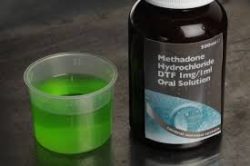8 Factors to Consider in Choosing a Methadone Maintenance Treatment Program
According to the National Institute on Drug Abuse, around 52 million people use prescription medication for nonmedical purposes and 4.2 million people abuse the illegal opiate heroin. This means that a large percentage of people are addicted to opiates. If you are addicted to opiates, you have options. Choosing between the options is difficult, particularly when struggling with addiction. There are many factors to consider when choosing a methadone maintenance treatment program. It is important to examine each of them before choosing to use methadone.
1. Opiate Withdrawal
One of the major reasons people choose methadone treatment is to avoid the symptoms of withdrawal. The symptoms of opiate withdrawal are:
- diarrhea,
- vomiting,
- anxiety,
- depression,
- running nose,
- tearing eyes,
- nausea,
- muscle aches,
- pain,
- cramping, and
- chills and sweats.
These symptoms might not seem like much, but when you are coming off opiates, they are very severe. Most people find them unbearable and intolerable when they attempt to go through the withdrawal alone. Many sources say that quitting opiates “cold turkey,” is almost impossible without relapsing back into the addiction. This alone is a good reason to consider inpatient treatment.
2. What Methadone is
One of the reasons that methadone treatment is so popular is because of what it is. Methadone is an opiate agonist. It binds to the opioid receptor sites in the brain. Although it is capable of causing a high, the high is not as intense an opiate high. People who use it are not as likely to get addicted to it as when they use opiates. Most people who take methadone say, they do not experience a high at all, yet it still acts as a painkiller and can treat chronic pain.

Methadone is an opiate agonist.
It is important to know that methadone does cause dependence but because of its longer half-life it is not as addictive as an opiate is. It also does not cause the same effects as opiates do. There is also the possibility of an overdose when you are not using methadone as directed by your doctor.
3. What Methadone Does
Methadone is an opiate replacement drug. It replaces the opiates in the brain, effectively blocking them from the receptor sites. People who are on methadone say they experience:
- mild euphoria,
- managed pain,
- eased muscle tension, and
- less negative effects than opiates.
4. The Side Effects of Methadone
It is important to consider the side effects of methadone before you decide on a methadone treatment program. Some of these side effects are relatively common while others are rare. According to the National Library of Medicine, the common side effects of methadone are:
- headache,
- nausea and vomiting,
- loss of appetite and weight gain,
- dry mouth and a sore tongue,
- sweating and flushing,
- mood changes,
- vision problems,
- insomnia,
- decreased sexual ability or desire, and
- for women missed menstruation.
Most of the more rare side effects of methadone are due to an allergic reaction. If you experience them it is important to seek medical attention as soon as possible. The rare side effects of methadone are:
- itching and hives,
- rash,
- swelling of the eyes, tongue, or throat,
- difficulty breathing or swallowing,
- extreme drowsiness, and
- hallucinations of any kind.
Although allergic reactions are rare, it is important to take them into consideration before choosing a methadone program.
5. The Type of Program
There is a variety of options when it comes to methadone maintenance treatment plans. You can choose to start your methadone treatment with an inpatient program or one that is on an outpatient basis. Most physicians prefer to see methadone patients daily at the beginning of their treatment so either options works well. The treatment option that you choose is up to you depending on your time and preferences.
6. The Other Options for Treatment
When considering any treatment plan, it is important to also look at other options. Some of the alternatives to methadone treatment are:
- quitting opiates cold turkey – with this option you choose to stop opiates without a replacement and experience withdrawal.
- stopping cold turkey with counseling – you can still attend inpatient and outpatient counseling sessions without saying yes to methadone treatments.
- stopping with medical help aside from methadone – when you stop treatment, you can still take advantage of medical support without using methadone. There are other drug replacement therapies and other medications to help with the symptoms of withdrawal.
There are many methods of stopping an opiate addiction; methadone maintenance is just one of them. It is important to consider each treatment on its individual merits.
7. What are the Benefits of a Methadone Treatment Plan
There are many benefits to participating in a methadone maintenance treatment plan. A few of these benefits are:
- little or no withdrawal symptoms,
- pain management,
- monitored by a doctor,
- counseling by qualified professionals, and
- comprehensive treatment for the addiction.
8. What are the Drawbacks of a Methadone Treatment Plan
As with anything there are drawbacks to using a methadone treatment plan. These drawbacks include:
- methadone is addictive,
- methadone use is a tightly controlled process,
- it is possible to overdose on methadone, and
- there is a stigma attached to using methadone.
If you are considering seeking opiate addiction treatment, it is important to know all of the options available to you. Although methadone maintenance treatment is highly effective, it is not for everyone. For more information about methadone maintenance, call us at 1-800-994-1867Who Answers?.